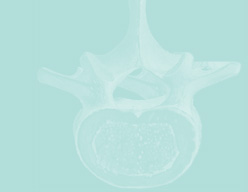page [1] [2] [3] [4] [5] [6] [7] [8]


Click image to enlarge
Excluding the approximately 10–20% of patients with back pain due to systemic spinal disorders and referred pain, most of the rest comprises the vast but ill-defined category of back pain due to nonspecific spinal disorders. In 90% of the adults with limiting low back problems, spontaneous recovery usually occurs within 6–12 weeks of onset. It is estimated that 60–80% of patients with acute low back pain are free of discomfort within 2 weeks; hence, it is not surprising that the bulk of low back pain problems resolve with conservative management and minimal intervention. Although patients often recover spontaneously from acute episodes of low back pain, 70% suffer recurrence, and subsequent injuries are often more severe and longer lasting. When treating patients with back pain one must screen appropriately for serious conditions and treat appropriately for these emergent/urgent problems. The remaining patients are usually managed conservatively, as the majority with acute back pain recover from symptoms and activity limitations within a short period of time. As with all pain complaints, if a significant decrease in pain is not noted after 2–3 weeks of conservative therapy or if different complaints develop, the diagnosis and treatment plan should be reviewed thoroughly. In the patient with back pain, it is important to maintain a reasonable vigilance for back pain of systemic etiology even if the initial symptoms do not indicate a systemic origin.
Conclusion
Back pain is the most prevalent musculoskeletal disorder in the world today. It is caused by a wide and heterogeneous range of specific diseases and nonspecific musculoskeletal disorders involving the spinal column. The aging world population (fig. 2) is at increased risk for back pain resulting from spinal disorders. Back pain and the resulting disabilities have significant consequences on individuals, families, and society. Effective ways to prevent and treat these disabling conditions need to be found.
| page [1] [2] [3] [4] [5] [6] [7] [8] >> next |



